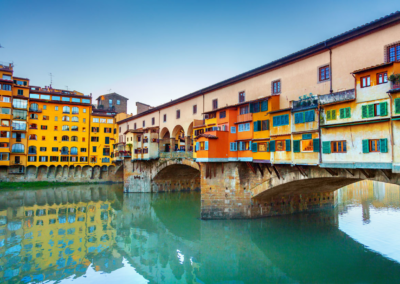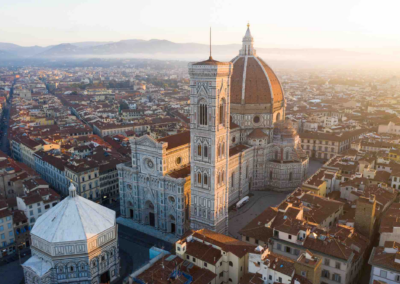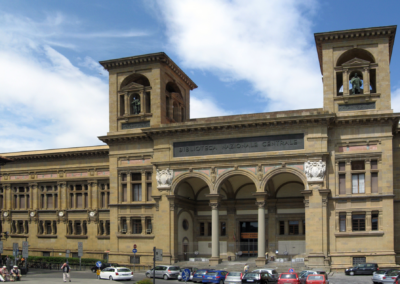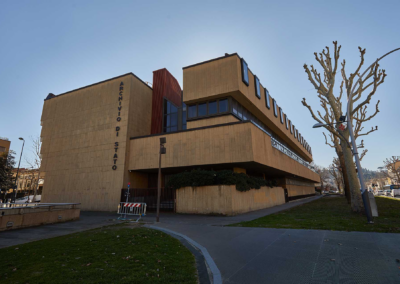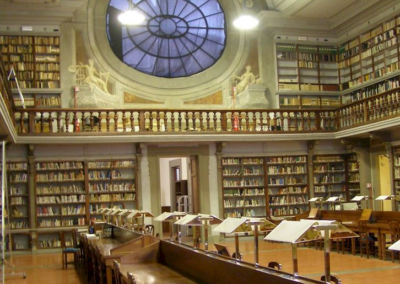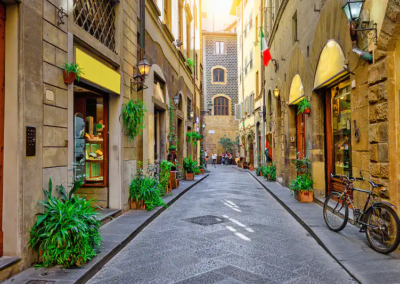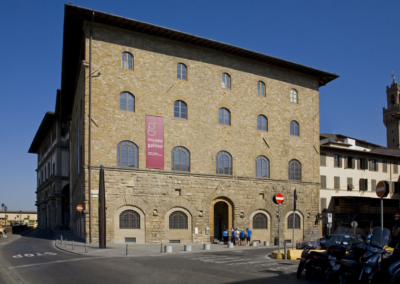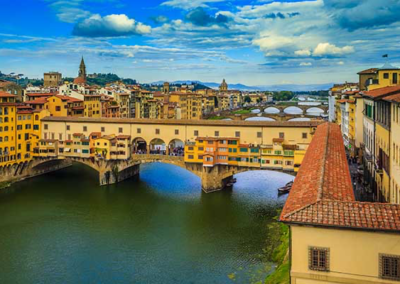Galileo’s Daughter
Dramaturgy Booklet
by Abhi Shrestha & Cori Lang
Dava and Galileo’s Daughter
Dava Sobel is the author of the novel Galileo’s Daughter, a biography of the scientist Galileo Galilei in which his life is illuminated through the letters that survive the relationship between him and his daughter, Sister Maria Celeste.
Sobel translated all 124 letters sent from Maria Celeste to Galileo, which are available to read through The Galileo Project website or in Sobel’s book Letters to Father.
Sobel on Galileo’s Daughter: “I often think this was the book I was born to write. I felt a bond with the title character, though she was a Catholic nun living in Tuscany in the early sixteenth century, and I was raised Jewish in the Bronx in the mid-twentieth. From my first encounter with Suor Maria Celeste (Virginia Galilei), reading the letter in which she implored her father for help fixing the convent clock, I was enthralled by her prose style, her humor, and her moxie.”

Timeline
1543- Copernicus publishes De revolutionibus, which asserts that the Earth moves around the Sun
1564- Galileo is born on February 15th
1600- Virginia Galilei (Maria Celeste) is born on April 13th
1609- Galileo improves on the telescope, observes and measures mountains on the moon
1610- Galileo discovers the moons of Jupiter
1610- Galileo publishes The Starry Messenger
1613- Virginia enters the Convent of San Matteo in Arcetri
1614- Virginia assumes religious habit
1616- Galileo publishes his “Theory on the Tides”
1616- Edict issued in Rome against Copernican doctrine
1616- Virginia swears her vows as Suor Maria Celeste
1630- Galileo visits Rome to obtain printing license for his Dialogue on the Two Chief World Systems
1632- Galileo publishes Dialogue on the Two Chief World Systems
1633- Galileo stands trial for heresy by the Holy Office of the Inquisition
1633- Galileo is convicted of suspected heresy and recants on June 22nd; Dialogue is prohibited
1634- Galileo is allowed to serve his sentence under house arrest in Arcetri
1634- Maria Celeste dies on April 2nd from dysentery
1642- Galileo dies on January 8th
1822- The Holy Office permits publication of books that teach Earth’s motion
1835- Galileo’s Dialogue is dropped from the list of prohibited books
1979- Pope John Paul II calls for theologians, scholars, historians to reexamine Galieo’s case
1992- Pope John Paul II publicly endorses Galileo’s philosophy

Portrait of Maria Celeste
The Convent of San Matteo, home of Maria Celeste
The Sisters of San Matteo belonged to the order of Poor Clares, also known as Poor Ladies, Sisters of Saint Clare or Clarisses. Clare of Assisi (1194-1253) founded the order in the thirteenth century under the tutelage of her friend and teacher St. Francis of Assisi.
The Poor Clares lived by these four vows: poverty, chastity, obedience, and enclosure.The Poor Clares at San Matteo lived in a state of poverty, and because of this the sisters at San Matteo supported themselves with money from relatives (like that which Maria Celeste frequently requested from Galileo). They also spent a great deal of time baking and sewing to raise funds for their subsistence.
In the 1600s, convents were an acceptable substitute for marriage for daughters of the upper classes. The convent of San Matteo, in Arcetri, was popular with the middle classes, because the entrance fee was lower than that of a convent inside the walls of Florence. Because Maria Celeste was an illegitimate child of Galileo, she was placed in a convent partly because Galileo could not afford the sizable dowry necessary to gain an acceptable husband, as well as the danger associated with Galileo’s increasingly risky publications on the universe.
Artifacts of Galileo

Galileo’s Drawings of sun spots

Galileo’s drawings tracking the movement of Jupiter’s moons

The telescopes used by Galileo (on display at the Museo Galileo in Florence)

Galileo’s finger encased in glass. His fingers, as well as a few teeth and a vertebra, were removed from his corpse as relics of science
Galileo exhumed
When Galileo died in 1642, he was still thought of as a heretic by Pope Urban VIII and the Catholic Church, and so he was given an unceremonial burial, interred in a small room off the chapel in the church of Santa Croce. Despite the efforts of his friends and disciples, it was not until 1737 that Galileo’s body was able to be exhumed and given a proper ceremony, burial, with a mausoleum built to commemorate his achievements in life.
However, when the people uncovered Galileo’s grave, they found two bodies, two coffins without any nameplates on them. After investigation, it was found that the body in the first coffin belonged to Galileo. However, the lower coffin contained the body of a young woman…
From Galileo’s Daughter by Dava Sobel:
“The congregation divided itself solemnly in half, each group walking Galileo’s body partway through the basilica, so that as many participants as possible could share the honor of being his pallbearers. Then they carried the woman to the mausoleum, too, and they laid her in the sepulchre beside her father. Once the shock of the discovery had dissipated into the silence of the great empty church, those attendants who remembered Viviani could unfurl the mystery for themselves. The disciple, driven to despair by his failure to pay the tribute he felt he owed his mentor, had given Galileo something dearer than bronze or marble to distinguish his grave. Even now, no inscription on Galileo’s much-visited tomb in Santa Croce announces the presence of Suor Maria Celeste. But still she is there.”

Administrative Office
3759 N. Ravenswood Avenue
Suite 124
Chicago, IL 60613
773.244.8119
Performance Venue
Theater Wit
1229 W. Belmont Ave.
Chicago, Illinois 60657
Box Office: 773.975.8150
Stay Informed
Get the latest news and special offers by signing up for our email list.
sign up today

